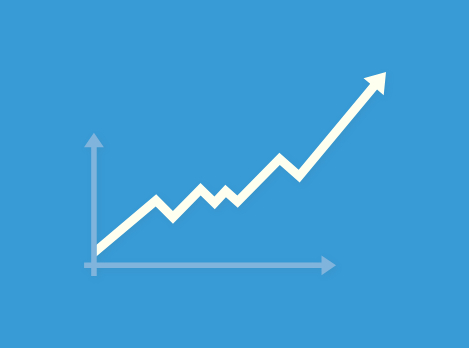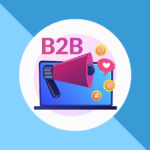Whether you’re looking to meet aggressive growth targets or reduce your ad costs to combat inflation, optimizing your Google Ads conversion rate is one of the most important things you can do. Read on to discover our top tips for increasing your Google Ads conversion rate!
Increase your leads & sales, without increasing your costs
Improving your conversion rate can have a positive impact across your entire account, increasing your total number of conversions and reducing your average cost per acquisition (CPA). A better conversion rate helps to counteract negative effects of budget cuts and inflation by making your ads more cost-efficient.
First, a primer on conversion rate
Conversion rate reflects the proportion of clicks on your ad that lead to a valued action, like completing a lead form or making an online purchase. Your conversion rate measures how effectively you can reach the right users, deliver what they’re looking for, and encourage them to take action.
The definition of a good conversion rate varies for every business, but benchmarks place the average between 2-5%. That being said, it’s okay to shoot for the stars! Some of our high-performing Google Ads accounts have conversion rates higher than 10%. The conversion rate you should aim for depends entirely on your marketing goals.
Conversion rate is influenced by several factors:
- Industry
- Targeting (keywords and audiences)
- Ad messaging
- Landing page experience
- Brand awareness and competition
- How you define a conversion
We’ll cover most of these factors in more detail throughout this post.
#1: Define a conversion
Before you dive deep into improving your conversion rate, it’s important to settle on a definition of a “conversion”.
A conversion is any measurable action that creates value for your business. When thinking about conversions, start by counting all the different ways that users can make a purchase or get in touch with you online. In our experience, the most common conversions include form submissions, clicks to call, clicks to email, interactions with a chat box and online transactions.
Once you’ve defined your conversion action set, you can prepare a goal tracking framework, set up your goal tracking, and set key performance indicators (KPIs). (For more on this entire process, learn more about our Digital Advertising services.)
#2: Review your campaign scope
The campaign types you’re running can have a major impact on your overall conversion rate.
Search campaigns target users based on what they’re looking for in the moment, so it’s no surprise that they tend to have the highest conversion rates. Other campaign types like Display, Video, Discovery and Performance Max rely on broader targeting methods that are less likely to drive immediate action.
Turning off underperforming campaigns can improve your account’s overall conversion rate. But before turning off the taps completely, consider what value they might be contributing to your marketing funnel.
Campaign Tips
- To measure the impact of a display campaign, you may need to borrow tactics from more traditional marketing channels like radio and television. Try running your campaign only in specific geographic markets. Then, evaluate overall performance for any lift in the markets where you ran the campaign.
- Consult the Attribution report in Google Ads for insights on how your different advertising efforts work together to create conversions.
#3: Evaluate your targeting
Are you reaching the right people?
In Google Ads, there are two ways to get in front of your potential customers: keywords and audiences.
Keywords
Keywords are the primary targeting method for Search campaigns. While a poorly thought-out keyword list can be detrimental to your success, changing up your keywords is one of the fastest and easiest ways to improve your conversion rate.
In our experience, some of the most common keyword issues include:
- Overuse of the “broad” match type, causing ads to trigger on lots of irrelevant queries
- Keywords misaligned with ads and landing pages
- Lack of negative keywords to exclude irrelevant traffic
A good keyword list is one that is refined on a continual basis. That’s why we recommend dedicating time to review your Keywords and Search Terms reports weekly. (If you don’t have the time for this, our in-house Google Ads managers can help!)
Keyword Tips:
- Review your Keywords report for keywords that spend a lot but don’t convert. Consider pausing these or switching them to a more specific match type (like exact match).
- Proactively add negative keywords for common searches that don’t reflect purchase intent, like “free”.
- Review your Search Terms report regularly, focusing on the ones that generate clicks and cost. When you spot a phrase that’s irrelevant, exclude the lowest common denominator of the search (such as “jobs” in “digital marketing jobs”).
Audiences
Google Ads offers a variety of different audience targeting options. To optimize your conversion rate, you’ll need to consider all audiences available to you. These include:
- In-market: Purchase intent
- Affinity segments: Habits and interests
- Life events: Milestones like moving or changing jobs
- Custom segments: Relevant keywords, URLs and apps
- Customer match: Your existing customers and first-party data
- Website and app visitors
Audience Tips:
- Review your Audience report in Google Ads for a breakdown of cost and performance by audience. You might discover underperforming audiences that can be removed or replaced.
- Check your Targeting/Observation settings for each campaign. If you add audiences but they are only set to “Observation”, your campaign will still reach people beyond those parameters.
- Don’t neglect your first-party data! With a global shift towards data privacy, Google’s audience signals will become less and less reliable, so it’s more important than ever to have your own lists of current and potential customers. If you don’t have any first-party data, it’s never too late to start collecting it.
#4: Reconsider your bidding strategy
Are you allocating your budget effectively?
Once upon a time, Manual CPC was the only way to bid in Google Ads. As much as we love the control it offers, manual bidding is painfully inefficient. It relies on collecting data, processing and reviewing the data, and making decisions to apply to future ad auctions.
To increase your conversion rate in a scalable way, you’ll want to consider an automated bidding strategy.
Automated bidding uses machine learning to adjust your bids in real-time.
Instead of entering the same bid for every possible ad impression, you compete more aggressively to reach users who are more likely to convert. Automated bidding is especially useful when you’re targeting a large pool of customers with a small budget. When you can only afford to reach a portion of your audience, you can increase your conversion rate by bidding as efficiently as possible.
Bidding Tips:
- Different bidding strategies will have different results. If conversion rate is your priority, we recommend trying Maximize Conversions. Another strategy might be a better fit, so it’s important to test.
- Data is crucial for automated bidding. According to our sources at Google, if your account generates fewer than 30 conversions per month, you’re less likely to see results with an automated strategy.
- It takes time to drive results with a new bidding strategy. Before throwing in the towel, allow at least 7-14 days for your campaign(s) to adjust.
- If automated bidding isn’t for you, you can still optimize your conversion rate by applying manual bid adjustments to high-performing keywords, audiences, devices and demographics.
#5: Review your creative
What message are you sending with your ads?
With Google Ads charged on a cost-per-click (CPC) basis, making the most of your budget means getting the right people to click. That’s why it’s important to consider what message you’re sending with your ads, and how you could refine it to avoid wasted spend.
Creative Tips:
- Review the conversion rate of each of your ads. Which ads have the highest conversion rate, and how do they differ from ads with lower conversion rates? You can use these insights to develop better ads.
- With dynamic ad formats like Responsive Search Ads, it’s possible that your ads aren’t displaying like you expect them to. Asset reports tell you which assets are showing the most often and in what combinations, so you can troubleshoot any potential issues.
- Be specific in your messaging to ensure qualified clicks. For example, we’ve found that adding pricing details to your ads can help to deter tire kickers from clicking.
- Always test multiple ads. By regularly swapping out your underperforming creatives, you can improve your results incrementally over time.
#6: Evaluate your landing pages
Your Google Ads are in great condition, but your campaigns still aren’t converting. What gives? While there’s lots to be done to improve conversion rate from within Google Ads platform, it’s equally as important to focus on what happens after the click.
How easy is it for a user to convert? What can you do to make it easier?
Essential to improving conversion rate is reducing unnecessary friction. Friction can be technical (like a slow-loading page) or psychological (like fear of making the wrong decision). While technical issues can often be solved by a developer, you’ll need to get your creative juices flowing to address psychological friction.
Consider all possible hesitations that might be keeping people from taking the next step.
Landing Page Tips:
- Relevance between your ad and landing page can help to prevent users from bouncing. To create continuity, echo the messaging from your ad on your landing page.
- People often delay major decisions. To encourage immediate action, you might try offering a “limited time” incentive. Make sure your offer appears risk-free by enabling free cancellations/returns or offering a no-obligation consultation.
- Provide “social proof” with reviews, testimonials or statistics to build trust.
- Test different call-to-action (CTA) buttons or add more buttons throughout to create more conversion opportunities.
- Generate more form submissions by capturing only the information you absolutely need.
- Run a PageSpeed Insights report and work with a developer to correct any page speed or technical issues.
#7: Hire a professional Google Ads manager
If this is all overwhelming to you, don’t worry – we’re here to help!
Improving conversion rate is no simple task. It requires work both inside and outside of the Google Ads platform.
Our Google Ads team has had years of experience figuring out how all the pieces work together to generate conversions, so we’re well-positioned to help you with your conversion rate challenges.
We can perform an in-depth audit of your Google Ads account, diagnosing any major issues and scoping out the best opportunities to get your campaigns converting at a higher rate. Then, we dig deeper into optimization across all areas to generate incremental improvements over time.








